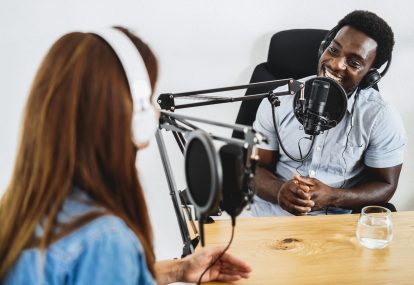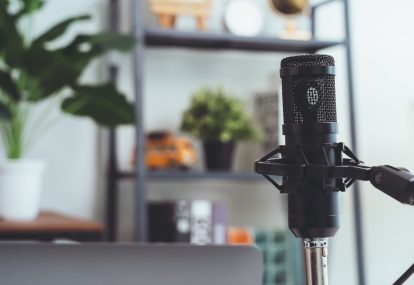Podcast episodes are made up of different segments that build a seamless show when put together. These important segments add depth to the episodes. They can come in the form of music, voice-over, live interviews, and many others.
Voice-overs are typical additions in podcasts. A voice-over is a piece of audio narration used in different ways. It can be an introduction sewn into the rest of the podcast or it can be an ad placement for your show.
Recording your voice-over is one thing and editing it is yet another. One thing is for certain though–podcasting is something you need to be knowledgeable in as you aim to increase your number of listeners and become exceptional as a podcaster.
Know the tools
Be familiar with the tools you can use when it comes to editing a voice-over. There are different software and programs that can help you do the job. Below are some of the editing buttons you need to familiarize yourself with:
- The Selector. This allows you to click and drag the cursor across your audio in the track. This will select the specified range for editing. The selector tool is usually located in the main viewing window.
- The Trimmer. With this button, the specified region can be shortened or expanded to your desired length. To trim this, just click the cursor at the edge and drag it towards the center. While you’re dragging the cursor, this trims the edge of the region until you release the mouse.
- The Grabber. Through this tool, you can rearrange or move specific regions by dragging it to a new location.
- The Zoomer. When you click the zoomer, this turns the cursor into a magnifying glass. Click and drag this to a part of the track that you want to view in detail. Once you drag the magnifying glass, a dashed box appears indicating the range you are viewing.
Editing a voice-over
Now that you know the necessary tools you need for voice-over editing, let’s get some work done. So, how do you edit a voice-over?
Once you’re done recording, the hard part has just begun. Editing is an aspect of podcasting you need to not just learn but also master. Often, it’s in the editing that magic happens. Good editing (in addition to quality content) can really turn a rather drab episode into an awesome one.
Editing a voice-over is no different from editing other parts of an audio recording. First, you need to find the region or the audio part you need to edit. Select it and perform the edits you need to get done. Once done, listen to the edited recording and select the best one you can use.
Things to consider when editing
When editing you need to keep in mind the room tone. Be mindful of how your audio sounds. This is considered the auditory fingerprint of your recording location. The room tone is the non-specific sound that is generated by the room’s natural acoustics.
If you’re adding a voice-over to a recorded material, you might notice that the room tone varies. This might require editing, especially when the sounds are overlapping. It can even be harder if this happens while someone is talking. To edit this, just take the bit in question and find another to replace it. Edit and splice the part to replace the unusable part.
If this is not doable, then you might need to do ADR. Automatic dialog replacement (ADR) is the process of re-recording a specific dialog in the studio in order to match the original performance. To make sure the retake is successful, use the same microphone with the same tone of voice. The ADR is usually done on dialogs that could not be saved by simply splicing out the lines.
Your editing goal
You need to be particular about the purpose of the content when editing. Aside from going over the technical aspect, you also need to know how you’re going to present the audio in a way that matches its use.
When you’re editing, just remove the sections you don’t like. This might be parts where there are mistakes, like a mispronounced word, laugh, sneeze, or a cough.
Remember that editing can be subjective. You are the only person who can figure out which ones to cut and which ones to keep. This depends on how you want your podcast to sound. The goal is to make the audio flow seamlessly without any abrupt interruptions. You have to ensure that every bit works together and makes sense as a whole. If you find that there are disruptions or pauses, then you might want to go over it again.
Share this post!




